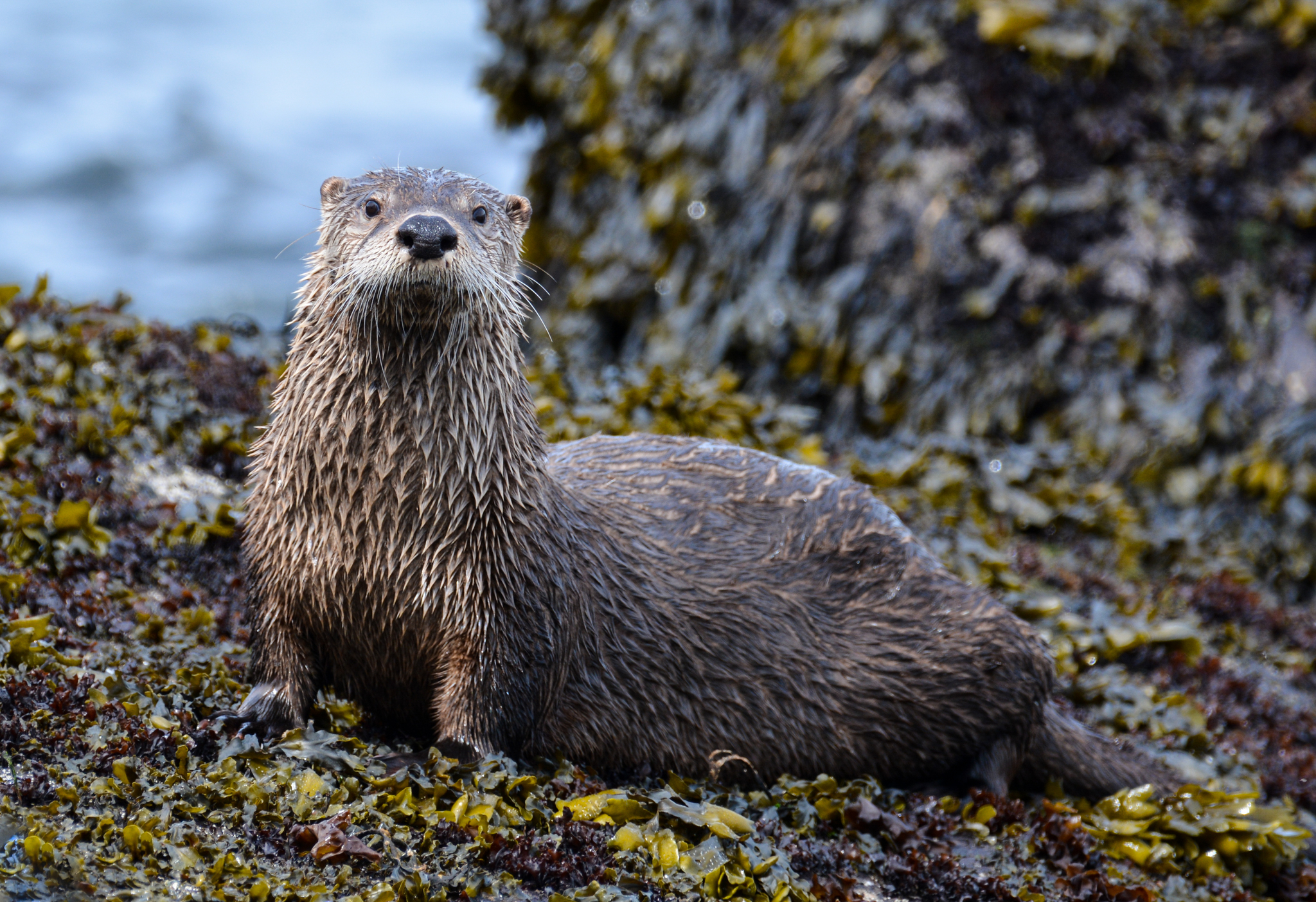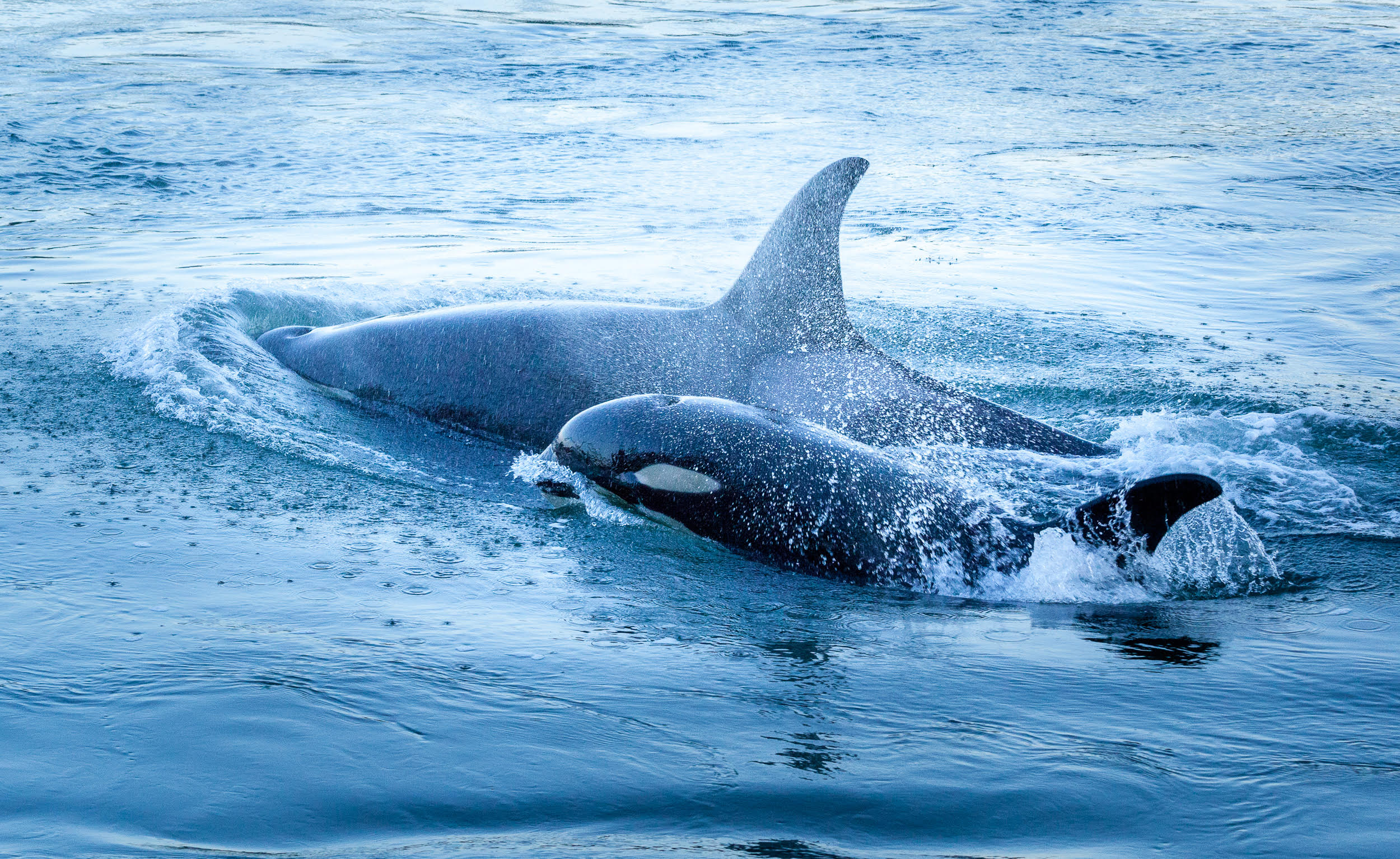Antranig Basman, Charlie Gibbs, Donna Gibbs, Andy Lamb, Jessica Scott, Andrew Simon
August 7th, 2023
Galiano Island’s marine mammal diversity
The name ‘Mammalia’ was coined in 1758 by Linnaeus, from Late Latin (neuter plural) ‘mammalis’, meaning “of the breast.”
Mammalia are a class of vertebrates containing 6,400 species worldwide. Within British Columbia, 31 marine mammal species are represented among two orders, including Carnivora (carnivores) and Cetacea (cetaceans). Twenty-two marine mammals have been documented within the Salish Sea, including fifteen cetaceans, five species of pinniped and two mustelids. Of these taxa, 13 marine mammal have been reported in waters around Galiano Island to date, through the combined efforts of more than 3 individuals.

River otter (Lontra canadensis) – Photograph by Joan Septembre
Among locally occurring cetaceans are: baleen whales, distinguished by their enlarged head containing baleen plates suspended from the upper jaw, their double blowhole and their thick blubber; and toothed whales, distinguished by their teeth and single external blowhole. Certain cetaceans, such as fin whale (Balaenoptera physalus) and common minke whale (Balaenoptera acutorostrata) have been recorded infrequently in local waters, whereas others, such as humpback whale (Megaptera novaeangliae) and harbour porpoise (Phocoena phocoeana), are commonly seen. Among carnivores, both aquatic pinnipeds, such as harbour seal (Phoca vitulina) and semi-aquatic fissipeds, such as river otter (Lontra canadensis), are represented. Presently, there are no known haulouts of northern elephant seal (Mirounga angustirostris) around Galiano Island, though they are known not far away on Salt Spring Island.
 Populations of grey whale (Eschrichtius
robustus), humpback
whale, harbour porpoise
and the southern resident orca population (Orcinus orca) are currently
ranked as species of conservation concern in the region. Northern
resident, transient and offshore orcas are also known to traverse local
waters and are listed as threatened within Canada.
Populations of grey whale (Eschrichtius
robustus), humpback
whale, harbour porpoise
and the southern resident orca population (Orcinus orca) are currently
ranked as species of conservation concern in the region. Northern
resident, transient and offshore orcas are also known to traverse local
waters and are listed as threatened within Canada.
Community science contributions
Since the Biodiversity Galiano project began in 2016, our community has documented 9 marine mammal species in the waters around Galiano Island, confirming all historical records and adding 1 new species to the list.
Mammals with Indigenous cultural significance
Mammals are one of many phyla that have cultural significance to Hul’qumi’num speaking peoples. Generally, fish are regarded as important food sources for delicacy and cultural practice. Specific species of mammals that have important cultural significance include:
Stellar Sea Lion California Sea Lion, known in Hul’qumi’num as Shes or Ts’axulus Shes are typically 3-4 times larger than ts’axulus, with ts’axulus having a darker appearance in colour. Shes is a special food source for certain animals and people.
River Otter, known in Hul’qumi’num as Sqeetl’ Sqeetl’ have a large appetite, feeding on fish, crayfish, and crab depending on whether they are in salt or fresh water. Sqeetl’ have important spiritual value for certain people.
Harbour Seal, known in Hul’qumi’num as ’E s-hw ’E s-hw feed on mainly fish and shellfish, typically frequenting areas that are protected from bad weather and predation, near an easily accessible foraging site. Young ’e s-hw pups are preffered for eating. The skin of ’e s-hw is used for oil.
Mink, known in Hul’qumi’num as Chuchi’q’un’ Chuchi’q’un’is featured in several traditional stories and first hand accounts relating to its character and abilities. In traditional stories, Chuchi’q’un’ is a jester. Chuchi’q’un’ fur is highly valued to its short, fine, and dense nature. Chuchi’q’un’ fish for salmon, so you may encounter a Chuchi’q’un’ competing with you for salmon.
Orca (Killer Whale), known in Hul’qumi’num as Q’ul-lhanamutsum Q’ul-lhanamutsum are highly endangered marine mammals, with the southern resident community comprising only 89 individuals. Q’ul-lhanamutsum pods feed on salmon. Q’ul-lhanamutsum can be your friend, helper, enermy or saviour. The land form of Q’ul-lhanamutsum is stqeeye’ (wolf).
Top community contributions to our knowledge of Galiano Island’s marine mammal diversity
Here, you can browse photos of mammal species commonly documented around Galiano Island, as well as recent observations, most favourited observations, and top observers, based on iNaturalist data. Please help contribute to the growing record of the island marine mammal diversity by submitting your observations to the Biodiversity Galiano iNaturalist project.